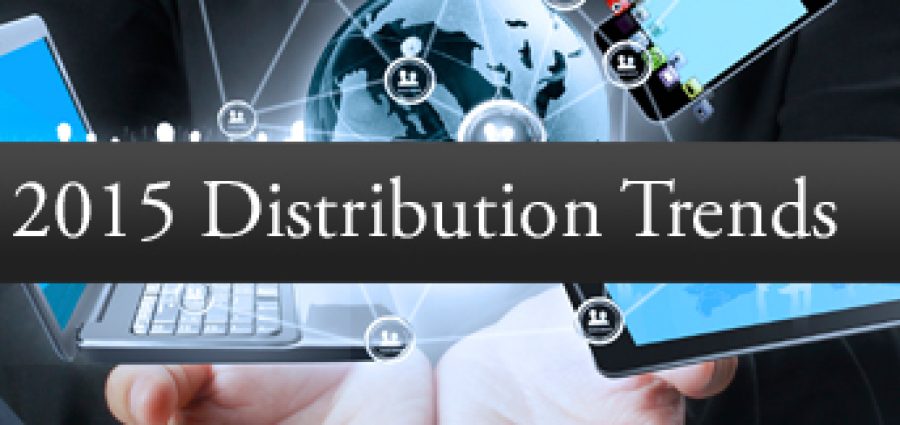This is a part of the 2015 Distribution Trends Special Issue. The annual feature was researched and written by MDM editors based on interviews with dozens of distributors, as well as industry experts and manufacturers. MDM also conducted a survey of its readers to uncover the trends outlined in this issue.
2015 Distribution Trends Special Issue
The Web is growing in importance for many distributors, and while investment has been slow over the last few years, many distributors, such as R. S. Hughes in Sunnyvale, CA, have recognized the urgent need to provide a functional platform.
“We’ve invested heavily in not only revamping our whole website over the last two and a half years, but in everything,” says Pete Biocini, president of R. S. Hughes. “We’ve brought in outside people to help with content so it’s original, we’re understanding SEO and how to work with ad words – not only as a lead generator, but as a profit center because Web orders are more profitable for us. … Generally speaking, there’s no bargaining on a website.”
Many distributors are surprised by how many of their customers are quickly adapting to new technologies – and it’s not just the young ones, says Guy Blissett, wholesale distribution specialist leader for Deloitte Consulting LLP. “Everyone’s more comfortable with tablets and smartphones now, and they’re using them everywhere,” he says. Thanks to online retailers such as Amazon, they’re more comfortable researching and transacting in this way.
While some B2B buyers are looking for a B2C experience, it’s not as simple as merely creating an e-commerce site like Amazon’s and then watching the online orders roll in. Punch-outs and other traits unique to the B2B ordering and purchasing process can limit an e-commerce offering.
“The majority of business that’s done requires some form of approval process and is external to the suppliers’ process, so what we’re looking at is the entire process – from the estimating process all the way to the billing process and even the payment process – and what kind of solutions might be able to be put in place at every step of the way,” says Scott Sellers, executive vice president, operations, McNaughton-McKay Electric Co., Madison Heights, MI.
On the other hand, many distributors are more open to providing a “quasi-B2C experience” on their websites, as well, says Suchit Bachalli, president of North America for Unilog. “I see a lot of wholesale distributors embracing the concept that they should be able to reach out to the end users a little bit more,” he says.
The end user isn’t the target customer for distributors, but they aren’t actively discouraging them from purchasing on the website at list price. These types of users don’t have to log in to place an order or access customized data. And because the initial investment in servicing them is low, there’s little concern if they aren’t repeat customers.
That’s the approach Houston, TX-based Hisco has taken with its website.
“The major driver for us around that is to make sure that those transactions are profitable – that’s what’s attractive about e-commerce,” says Andy Behr, director of marketing at Hisco. “They can self-service, and we can just knock that transaction out and increase the level of profitability for those B2C-type customers, even though they may be a business. It’s about time, price and availability to them and they make the purchase decision on that.”
Distributors are also embracing e-commerce because it allows them to spend more time on the high-value orders from existing customers rather than on “regular, repeat reorders,” says Ranga Bodla, wholesale distribution industry lead for NetSuite. “Distributors want to change the equation too.”
While the margins on individual orders may be better when they are placed online without intervention from a sales rep, an e-commerce platform can’t be a one-and-done investment. It has to be approached strategically and integrated with other sales channels, Bodla says. Customers expect real-time, up-to-date information whenever they access the site and will have little patience if they don’t get that.
Another challenge is that the Internet has the potential to “accelerate the commoditization of the products industrial distributors sell,” says David Parks, president of Hydradyne LLC, Fort Worth, TX. “What makes up the difference between commodity and innovation? You go into a commodity phase when the customer knows as much about the product and how to acquire it as you do.
“In every product life cycle, it moves from innovation to commodity,” he says. “The distributor’s challenge is to continue to provide services and information moving toward technology and innovative applications, where the customer needs the help.”
While there are still some distributors who have not embraced the role e-commerce can play in their businesses, the numbers are lessening. The industry as a whole has moved away from “if” and “maybe” to “when” and “how,” Bodla says.
“If you asked me 10 years ago how we were going to grow, I was going to keep doing what we had always done, which was put more feet on the street,” R. S. Hughes’ Biocini says. “I’m not saying that’s dead by any means because we still need feet on the street, but when you look at the millennial buyers coming in, I don’t think having an e-commerce platform is an area any smart distributors can ignore.”


